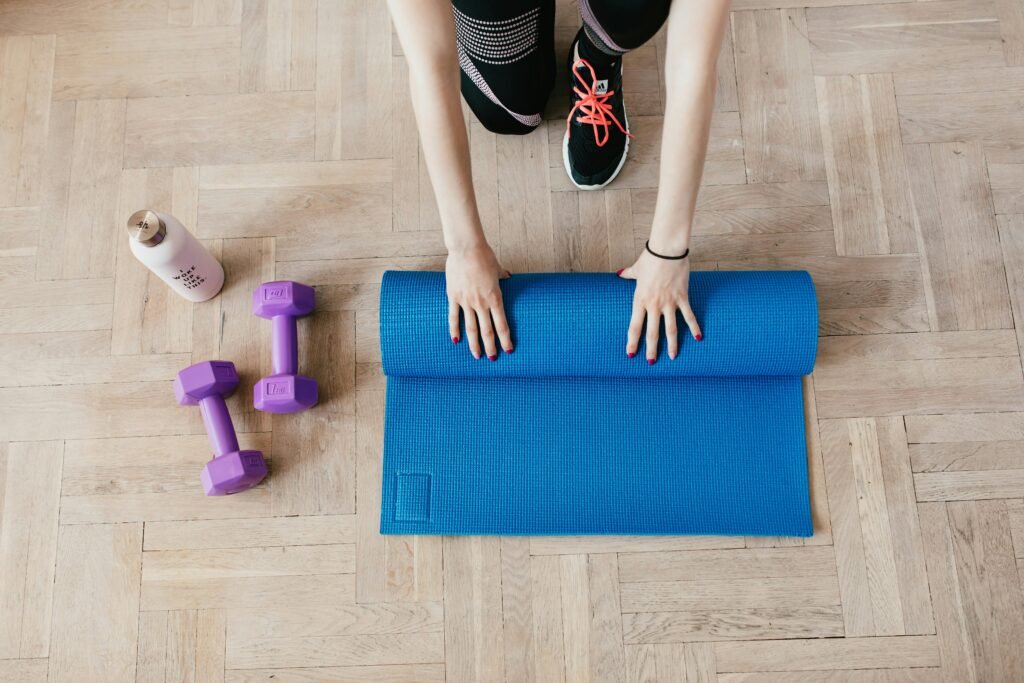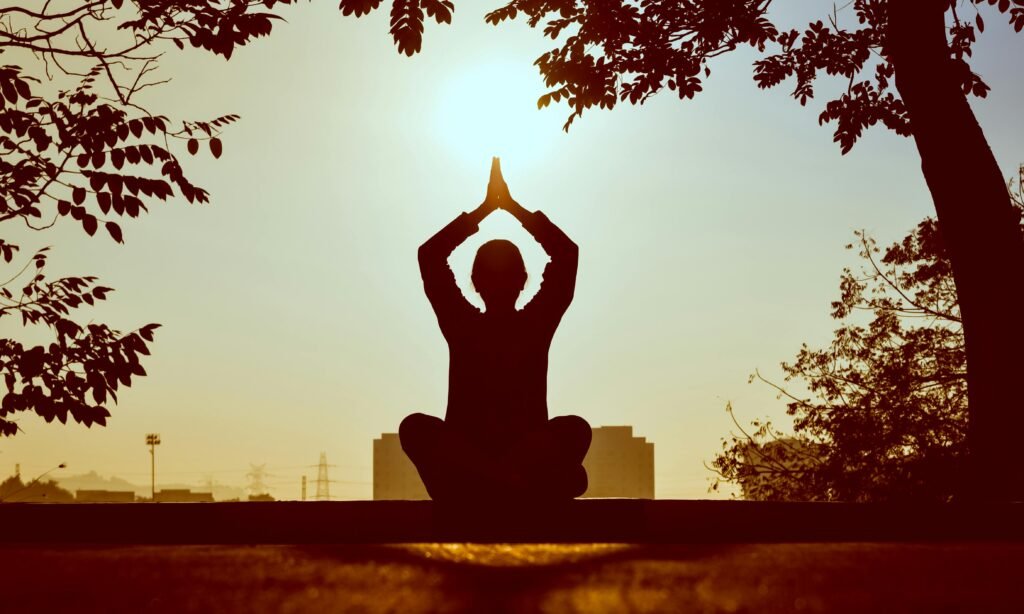Practicing yoga at home can be a convenient and effective way to improve your physical health, mental well-being, and overall quality of life. Whether you’re a beginner or an experienced yogi, having a home practice allows for flexibility and customization to fit your schedule and personal preferences. Here’s a comprehensive guide to help you start and maintain a successful yoga practice at home.
1. Setting Up Your Space
Creating a dedicated space for your yoga practice can help you stay focused and motivated. Here are some tips:

- Find a Quiet Area: Choose a space where you won’t be disturbed, ideally with enough room to stretch out fully in all directions.
- Use a Yoga Mat: A good-quality yoga mat provides cushioning and grip. If you don’t have a mat, a non-slip surface or a thick towel can work as a temporary solution.
- Keep It Clean and Clutter-Free: A tidy space helps create a calm and inviting atmosphere.
- Add Ambiance: Consider adding candles, incense, or calming music to enhance the environment.
2. Gather Your Equipment
While you don’t need much to start practicing yoga, a few items can enhance your experience:
- Yoga Mat: As mentioned, a good mat is essential.
- Props: Blocks, straps, and blankets can help you achieve proper alignment and make poses more accessible.
- Comfortable Clothing: Wear stretchy, breathable clothing that allows you to move freely.
- Water Bottle: Staying hydrated is important, especially if you’re doing a more vigorous practice.
3. Find Online Resources
There are numerous online resources to guide you through your home yoga practice:
- YouTube Channels: Many experienced yoga instructors offer free classes on YouTube. Popular channels include Yoga with Adriene, Yoga by Candace, and Boho Beautiful.
- Apps: Yoga apps like Down Dog, Glo, and Daily Yoga provide a wide range of classes for all levels.
- Subscription Services: Platforms like Gaia and Alo Moves offer extensive libraries of yoga videos for a subscription fee.
4. Start with a Warm-Up
Warming up is essential to prepare your body for the practice and prevent injuries. Here’s a simple warm-up routine:

- Cat-Cow Pose: Start with your hand palms and knees, alternating between arching your back (Cow) and rounding it (Cat) to mobilize your spine.
- Sun Salutations: A series of poses performed in a flowing sequence to build heat and stretch major muscle groups.
- Gentle Stretches: Focus on areas like the neck, shoulders, and hips to release tension.
6. Practice Basic Poses For Yoga At Home
Begin with basic poses to build a strong foundation. Here are a few to get you started:
- Mountain Pose (Tadasana): Stand tall with feet together, grounding through your feet and lengthening your spine.
- Downward-Facing Dog (Adho Mukha Svanasana): From hands and knees, lift your hips up and back, forming an inverted V-shape.
- Warrior I and II (Virabhadrasana I & II): Strong standing poses that build strength and stability in the legs and core.
- Child’s Pose (Balasana): A resting pose to stretch the back and shoulders, and calm the mind.
- Seated Forward Bend (Paschimottanasana): Sit with legs extended and reach forward, keeping the spine long, to stretch the hamstrings and lower back.
7. Cool Down and Relax
Always end your practice with a cool-down and relaxation:
- Supine Twist: Lie on your back, bring one knee across your body, and twist gently to release the spine.
- Legs-Up-the-Wall Pose (Viparita Karani): Rest with your legs up against a wall to promote relaxation and improve circulation.
- Savasana (Corpse Pose): Lie flat on your back with arms and legs comfortably spread, allowing your body to completely relax.
8. Develop a Routine
Consistency is key to reaping the benefits of yoga. Here are some tips for developing a regular practice:
- Set a Schedule: Determine the best time of day for your practice and stick to it. Early morning or evening are popular times.
- Start Small: Aim for short, manageable sessions at first, such as 10-15 minutes, and gradually increase the duration as you build strength and flexibility.
- Be Patient: Progress in yoga can be slow and steady. Focus on the journey rather than the destination.
- Listen to Your Body: Avoid pushing into pain or discomfort. Modify poses as needed and rest when necessary.
Conclusion
Practicing yoga at home offers flexibility and convenience, making it easier to incorporate into your daily routine. By setting up a dedicated space, gathering essential equipment, choosing a suitable style, and following online resources, you can create a fulfilling and effective home yoga practice. Remember to warm up, practice basic poses, cool down, and maintain consistency to fully enjoy the physical and mental benefits of yoga.



